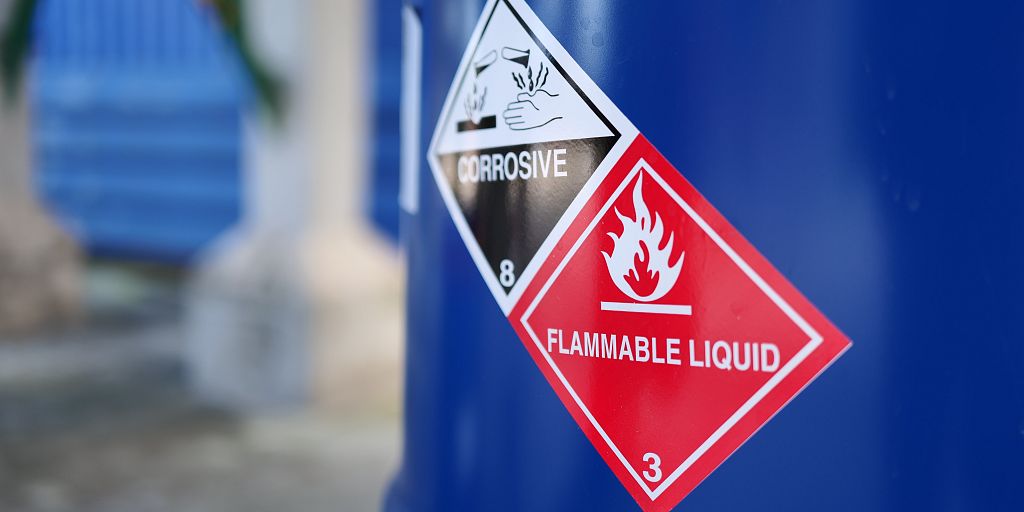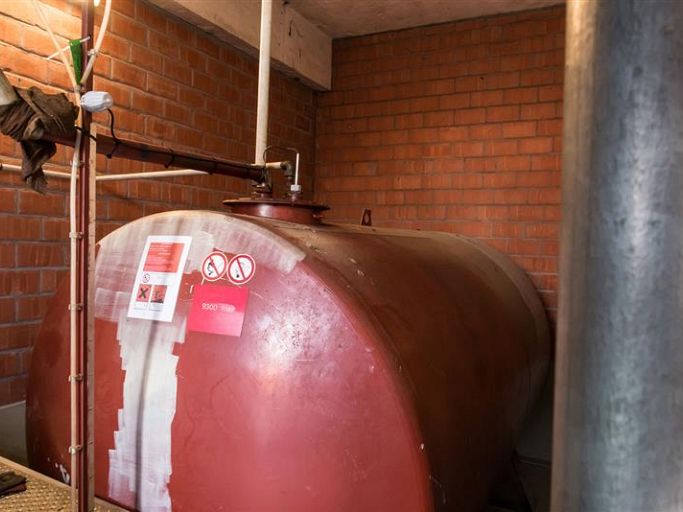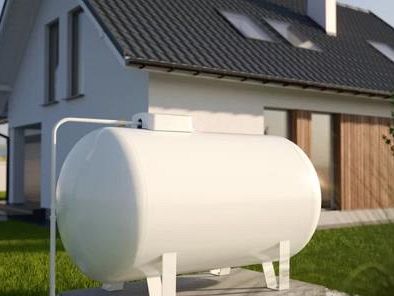Top Safety Tips for Handling and Maintaining Chemical Storage Tanks
8th November 2024
in oil
Author: Jack Dunn

Chemicals play an important role in various industries, ranging from agriculture to industry and manufacturing, and using tanks for the storage of hazardous materials is essential. However, tanks containing chemicals can pose serious risks if not handled and maintained properly. Safety is crucial - not only to protect personnel but also to safeguard equipment and prevent environmental damage.
Every business must follow best practices when handling and maintaining chemical storage tanks – and in this edition of the Tanks R Us blog we provide an overview of top tips for safe handling and maintenance.
Choose the right type of tank
The first step to ensuring safe storage of chemicals is to pick and install a tank that’s suitable for the specific chemical. Different chemicals have unique properties and so they may need to be stored in tanks made from specific materials in order to prevent reactions, deterioration and leaks. For instance, corrosives like acids may need tanks made from fibreglass or lined with resistant coatings, while substances that are flammable may require tanks made from fire-resistant materials.
Inspect and maintain
Routine inspections and maintenance are really important in your drive to prevent problems or accidents. Put together a maintenance schedule that includes visual inspections, testing of tank integrity and evaluation of safety components. These inspections should be undertaken by personnel who have been trained and are familiar with the specific requirements for chemical tanks.
During inspections, the inspector should pay particular attention to the walls, fittings and seals of the tank, as these are common points of failure, and check for signs of wear, corrosion and leaks. Any damage should be addressed immediately to prevent issues such as structural failure or leakage. Tanks should ideally also undergo regular pressure tests and non-destructive testing (such as ultrasonic thickness measurements) to ensure they meet and are maintaining safety standards.
Ventilation and spill containment
Proper ventilation is an absolute must. Ventilation prevents chemical vapours from building up within or around tanks, which can be dangerous. Tanks should include ventilation systems which have been specifically designed for the specific vapour pressures and emissions of the specific chemicals in storage. This will reduce fire risk and protect personnel from inhaling fumes that are hazardous.
Spill containment is also really important. Tanks should be bunded (ie. secondary containment), capable of holding at least 110% of the main tank’s volume. This ensures that leaks or spills are contained, which will prevent chemicals seeping into the ground or into water sources that are close by.
Training
Personnel who handle chemical storage tanks should receive the appropriate training on proper storage, handling and emergency procedures.
- Handling and transfer: This will cover the proper procedures for transferring chemicals to and from tanks, including how to safely operate valves, pumps and all other associated equipment.
- PPE: This training will cover the importance of wearing PPE (Personal Protective Equipment). This safety gear is likely to include gloves, goggles, respirators and chemical-resistant clothing, depending on the hazard level of the chemical.
- Emergencies: This will cover the appropriate procedures for handling leaks and spills, and for dealing with any other emergencies. It will involve evacuation plans, first aid and the clean-up of spillage.
Chemical storage tank training should be undertaken regularly so that protocols are refreshed in the minds of all personnel, as well as the latest information being made available. It’s also worth conducting drills to test readiness and response times.
Labelling and signage
Clear and accurate labelling of all chemical storage tanks, as follows, is absolutely crucial to prevent any mishandling or misunderstanding of what is present in the tank (or tanks).
- The name of the chemical
- The hazard classification of the chemical
- Specific handling precautions for the chemical
- Clear information on compatible and incompatible substances
Your signage should also include key safety procedures and emergency instructions in case there is accidental exposure or leakage. Hazard symbols should be compliant with the GHS (Globally Harmonised System of Classification and Labelling of Chemicals). This not only protects personnel but also aids first responders and emergency workers in identifying risks quickly.
Storage areas
Unauthorised access to chemical storage tanks increases the risk of accidents, damage, and spills, and exposes individuals to the risk of harmful chemicals without adequate protection or training. The areas where chemicals are stored should be restricted access, as this will minimise the risk of accidental or unauthorised handling. Only personnel who have been trained appropriately should be authorised to go near chemical storage tanks. There should be a secure locking system and clear guidelines on who can access storage areas, and under what circumstances. You could even seriously consider installing alarm systems and even CCTV cameras to monitor the area.
Temperature and pressure
Many chemicals are sensitive to temperature and pressure, and incorrect storage can lead to dangerous reactions including explosions. Tanks should have sensors to monitor temperature and pressure. Automated systems which can alert operators if parameters exceed safe limits, allowing for quick intervention, are a good idea. In addition, storing tanks in shaded or temperature-controlled areas helps to keep conditions stable, which prevent over-pressurisation and reduces the risks associated with temperature fluctuations.
Spill response
Even when you take preventative measures, accidents can happen. Having an effective spill response plan is essential for containing and cleaning up spills quickly and safely, should they occur.
- Immediate steps: Your plan will include guidelines on how to contain a spill quickly to prevent further spread.
- Notification: The plan should include the required steps for notifying key personnel (and external agencies) if necessary.
- Clean-up: The plan should include full details of the necessary processes and methods for cleaning up different types of chemicals. This should also include which materials (e.g., absorbents, neutralisers) are correct to use.
- Disposal: The plan will offer detailed procedures for safely disposing of contaminated soil, water or materials used in your clean-up.
You should make sure that spill kits, absorbent materials and other clean-up supplies are easily and readily accessible and stocks are replenished regularly. A clear plan for efficient spill response is essential so that in the event of something going wrong you can absolutely minimise environmental damage and ensuren the safety of your personnel.
Records
Another fundamental aspect of safe chemical storage tank management is keeping accurate records - of each chemical stored, including its quantity, storage conditions and safety data sheets (SDS). You should also document inspection dates, maintenance activities and any repairs or replacements to your tanks.
Regulatory agencies may also require specific documents for compliance audits. Always having ‘paperwork’ up to date and accurate so that the information is handy ensures that your facility can demonstrate compliance with industry standards and all of the regulatory requirements.
Regulations and standards
Regulations and best practices for chemical storage are often updated so that safety and environmental protection are constantly improving. It’s important for you to keep yourself in the loop with the latest standards (such as those provided by the HSE, Environmental Agency and any local or international bodies in your sector).
Compliance not only ensures that you are operating according to the highest safety standards, it also avoids the risk of potential punishments and financial penalties. Review industry updates regularly, and make concerted professional efforts to adjust your safety measures in line with the most current protocols. This will significantly reduce risk around your use of chemical storage tanks.
Handling and maintaining chemical storage tanks require careful planning, the installation of appropriate equipment, stringent safety and ongoing maintenance. By prioritising safety, your facility not only protects its assets and your staff, but it also contributes to a more sustainable environment.
One of the largest selections of tanks in the UK
Chat online or call us today on 01469 531229
Related Products
More Articles

How to Prevent Oil Theft – 8 Security Measures
1st August 2022 in oil

7 signs your oil tank needs replacing
4th August 2022 in oil

What are the advantages of a bunded oil tank?
6th August 2022 in oil

Our top 8 ways to maintain your oil tank
8th August 2022 in oil
Help
About Us
My Account
Newsletter Sign Up
Inspiration direct to your inbox, please enter your email below...
© Tanks R Us. All rights reserved. Registered in England. Registration number. 05804332. VAT number 364402764